Water spots on a car can be unsightly and frustrating to deal with. These spots are caused by hard water deposits that have dried on the car’s surface. If left untreated, they can damage the paint and become more difficult to remove over time.
In this article, we will provide a comprehensive guide on how to remove water spots from your car, including both DIY solutions and professional methods. Whether you’re a car enthusiast or simply looking to maintain your vehicle’s appearance, this guide will provide you with the knowledge and tools you need to effectively remove water spots and restore your car’s shine.
Understanding Water Spot Damage
They can quickly damage car paint if they’re not taken care of. As it evaporates, minerals from the water can be left behind and if not taken care of, these can etch into the vehicle’s paintwork and cause permanent damage.
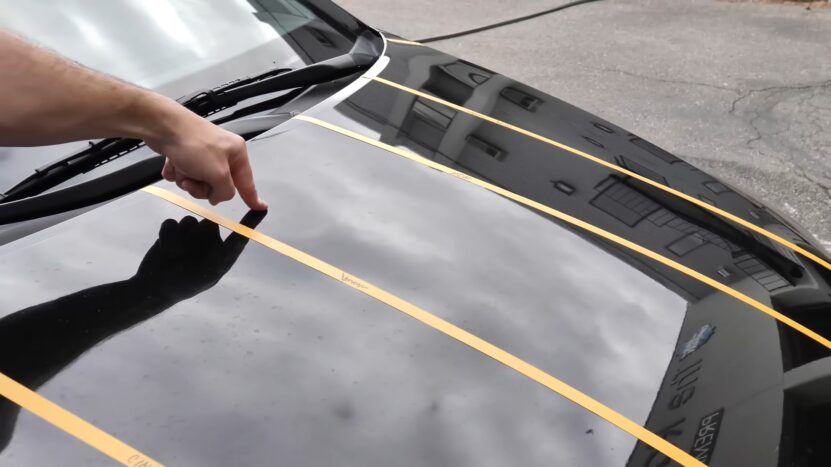
Types of water spots
They are usually caused by hard water or mineral deposits. There are three types and each requires a different approach to removal:
- Type 1: Ones that form on the surface of the car’s paint due to minerals in rainwater or hose water. These spots are often easy to remove through washing or using a specially formulated remover.
- Type 2: Water spots that etch into the paint or clear coat due to prolonged exposure to acidic contaminants like bird droppings, sap, or industrial fallout. These spots require a more aggressive approach for removal, such as using a clay bar or chemical water spot remover.
- Type 3: Ones that form on the car’s glass due to the minerals in the water. These spots can be removed using a vinegar solution or glass surface cleaner.
It is important to identify the type before attempting to remove it to avoid causing further damage to the car’s paint or glass.
The effects of water spotting
This is a common issue faced by car owners, and if not dealt with, it can lead to irreversible damage to the car’s paint, glass, and metal surfaces. It occurs when hard water evaporates on the car’s surface, leaving behind mineral deposits and salts that etch the surface, causing visible damage.
By understanding how they occur and taking proactive measures, car owners can keep their vehicles looking their best for years to come.
Prevention tips to avoid water spots
They can be a nuisance to car owners and can lead to permanent damage to your car’s paint and finish. Here are some prevention tips to avoid them on your car:
- Never forget to dry your car after washing it: They are caused by mineral deposits from hard water, which typically dry up and leave stains. To avoid this, dry your car after washing it, especially on days with high humidity.
- Avoid washing your car in direct sunlight: Direct sunlight speeds up water evaporation, leaving behind mineral deposits that cause these spots. Try to wash your car in shaded areas or during early morning or late afternoon hours.
- Use a water softener: This can help reduce the mineral content of the water you use to wash your vehicle, reducing their likelihood.
By following these prevention tips, you can help avoid them and ensure your vehicle’s finish stays in top condition.
Tools and Products Needed to Remove Water Spots

They can be a hassle to remove from your car’s paint and surfaces. Luckily, there are a few tools and products that can help make this tedious process easier.
In this section, we will discuss the tools and products needed to effectively remove water spots from your car.
Car Wash Soap Solution
When it comes to washing it, using a proper car wash soap solution is crucial to preventing them and maintaining the integrity of your vehicle’s paint job.
Choose a soap designed specifically for washing cars, as regular household soaps can strip away protective coatings and damage the finish.
Microfiber Towels
Microfiber towels are one of the best tools for removing water spots from your car. These towels are highly absorbent and gentle on your car’s surface, making them ideal for drying and detailing.
Clay Bar
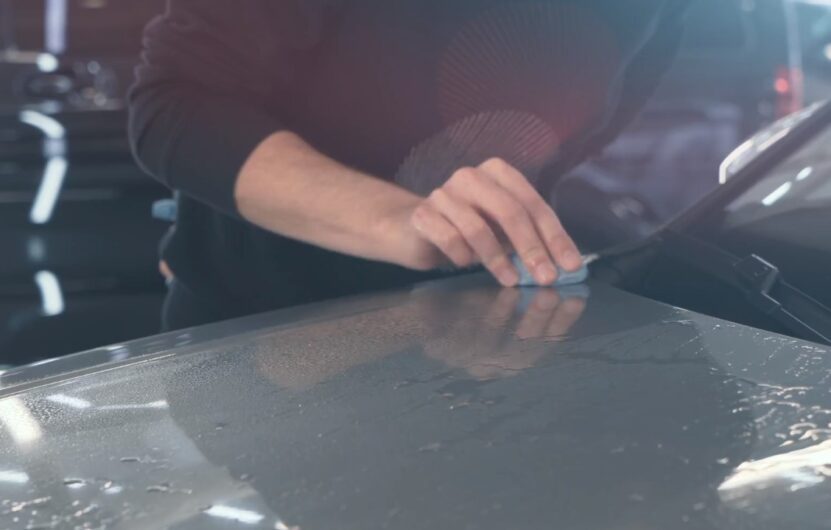
A clay bar is a highly effective tool for removing them from your vehicle’s exterior. Here are the tools and products needed to use a clay bar successfully:
You can purchase a clay bar kit that comes with clay bars, lubricant spray, and a microfiber cloth.
When using a clay bar, it is crucial to follow the instructions carefully and apply gentle pressure to avoid damaging your car’s paintwork.
Polishing Compound
Polishing compounds are an essential tool for removing water spots from your car’s paint without causing additional damage to the surface.
Follow these steps when using a polishing compound:
- Thoroughly wash and dry the affected areas of your car’s paint.
- Apply a small amount of polishing compound to a clean microfiber towel.
- Rub the polishing compound gently onto them in a circular motion.
- Repeat the process as needed until they are no longer visible.
- Rinse off the polishing compound residue with clean water and dry the area with a clean microfiber towel.
Steps to Remove Water Spots
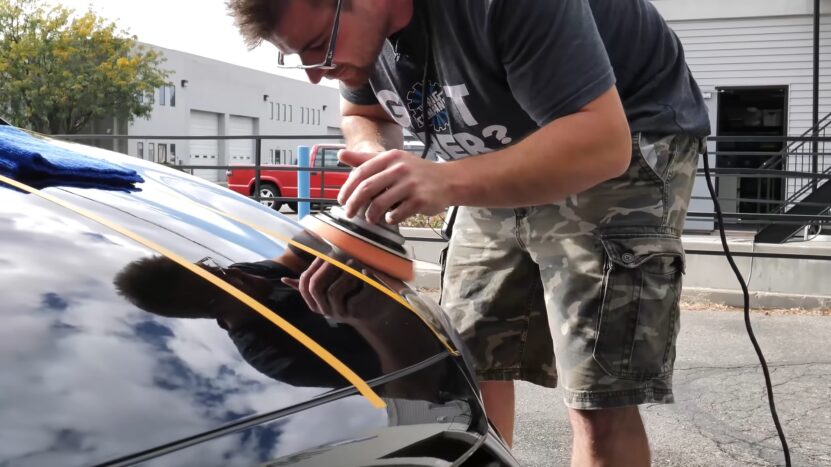
They can happen due to a multitude of reasons and can be a hassle to remove. Fortunately, there are easy and effective steps you can take to remove water spots from your vehicle and ensure your vehicle is as good as new.
In this section, we will look at the steps you need to take to remove water spots from your vehicle.
Preparation of the car surface
Water spots on your vehicle can be unsightly and potentially damaging to your car’s paint if left untreated. Here are the steps to remove water spots from your vehicle’s surface:
- Wash your car: Before removing them, it’s important to wash your vehicle thoroughly to remove any dirt or debris that could scratch your car’s paint.
- Dry your car: Use a microfiber towel or chamois to gently dry your car’s surface. Avoid air-drying, as this can lead to the formation of new water spots.
- Make a cleaning solution: Mix equal parts of white vinegar and distilled water in a spray bottle.
- Apply the cleaning solution: Spray the cleaning solution onto the affected areas and let it sit for 5-10 minutes.
- Rinse and dry: Use a clean microfiber towel to wipe the cleaning solution from your car’s surface. Then, rinse the area with water and dry it using a fresh towel.
- Buff the surface: If the water spots are stubborn, you can use a clay bar or buffing compound to gently remove them. Be sure to follow the instructions carefully to avoid damaging your car’s paint.
Buffing and detailing
Buffing and detailing are two essential processes to remove them from your car’s surface and restore its original shine. Here are the steps to follow:
Buffing:
- Wash and dry your vehicle before buffing.
- Apply a small amount of rubbing compound or polishing compound to a microfiber cloth or buffing pad.
- Rub the compound into the affected area in a circular motion, applying pressure as needed.
- Wipe off the excess compound using a clean microfiber cloth.
Detailing:
- Mix equal parts of water and white vinegar in a spray bottle.
- Spray the solution onto the affected area and let it sit for a few minutes.
- Use a microfiber cloth to gently scrub them in a circular motion.
- Rinse the area with clean water and dry it with a clean microfiber cloth.
- Apply a wax or sealant to protect the car’s surface from future water spots.
By following these simple steps, you can easily remove water spots from your car and keep it looking shiny and new.
Tips for Maintaining Water Spot-free Car Surface
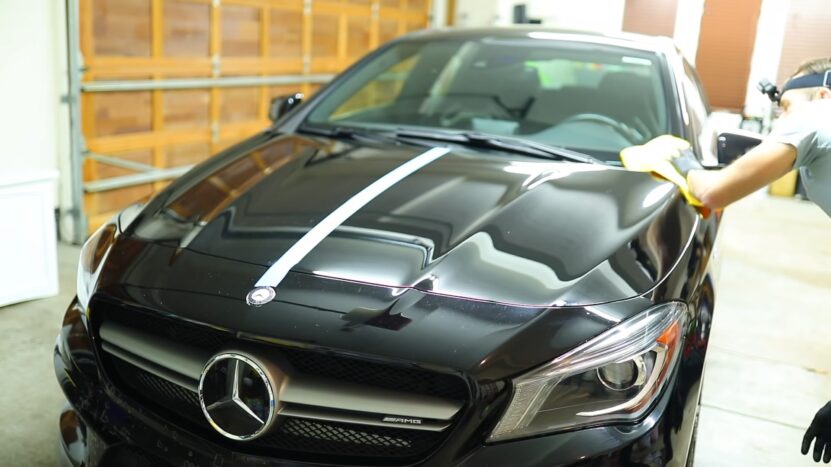
They can be a nuisance and make your vehicle look dark and dingy. Removing them can be tedious, however, it can be done with a few simple steps. Here, we will explore some useful tips for maintaining a water-spot-free car surface. Let’s get started!
Cover your car in heavy rainfall or snow
Covering your car in heavy rainfall or snow is a smart way to protect your car’s surface from developing unsightly water spots. When rainwater or snow melt accumulates on your car surface, it can leave mineral deposits that etch into the paint and glass, causing damage and making it difficult to remove.
Protect your vehicle from water spots by using a quality cover, especially during heavy rainfall or snow. A cover will shield the vehicle’s exterior from the elements, preventing water spots from developing and saving you time and money on repairs and detailing.
FAQs
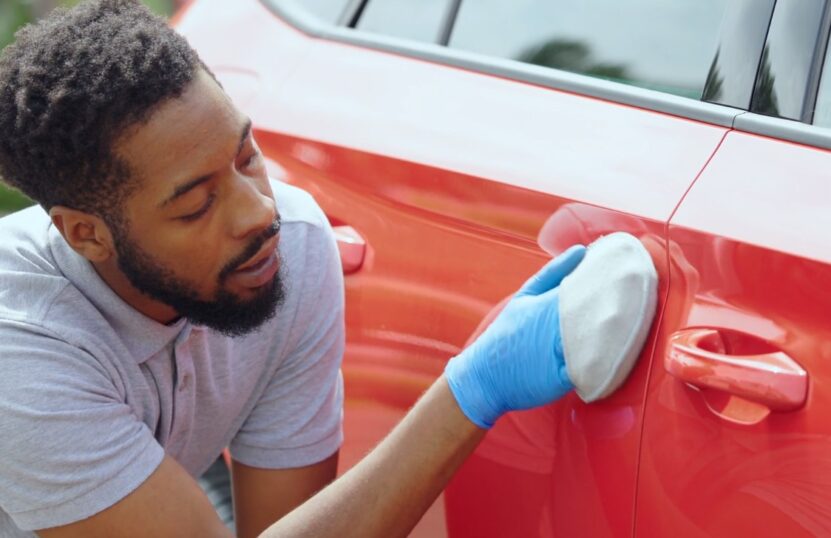
Is it necessary to polish a car after removing water spots?
No, polishing is not necessary after removing them, but it can help to restore the car’s shine and protect its paint.
How often should a car be washed to prevent water spots?
It is recommended to wash it every one to two weeks to prevent them from forming.
Can they be removed from car windows?
Yes, they can be removed from windows using a solution of vinegar and water or a commercial glass cleaner.
Can water spots be removed from a car’s chrome accents?
Yes, they can be removed using a solution of vinegar and water or a commercial chrome cleaner.
Are there any products that can help prevent water spots from forming on a vehicle?
Yes, there are products such as wax and ceramic coatings that can help prevent them from forming on a vehicle’s surface.
Should you seek professional help to remove water spots from a car?
If they are severe or the car’s paint is in danger of being damaged, it may be best to seek professional help to remove them.
Conclusion
In conclusion, water spots on a vehicle can be a nuisance, but they are not impossible to remove. By following the tips and techniques outlined in this article, you can effectively remove water spots from your car and restore its original shine.
Whether you opt for DIY solutions or professional methods, it is important to act quickly and not let water spots sit on your car’s surface for too long. With the right tools and techniques, you can easily remove water spots and maintain your car’s appearance for years to come.

